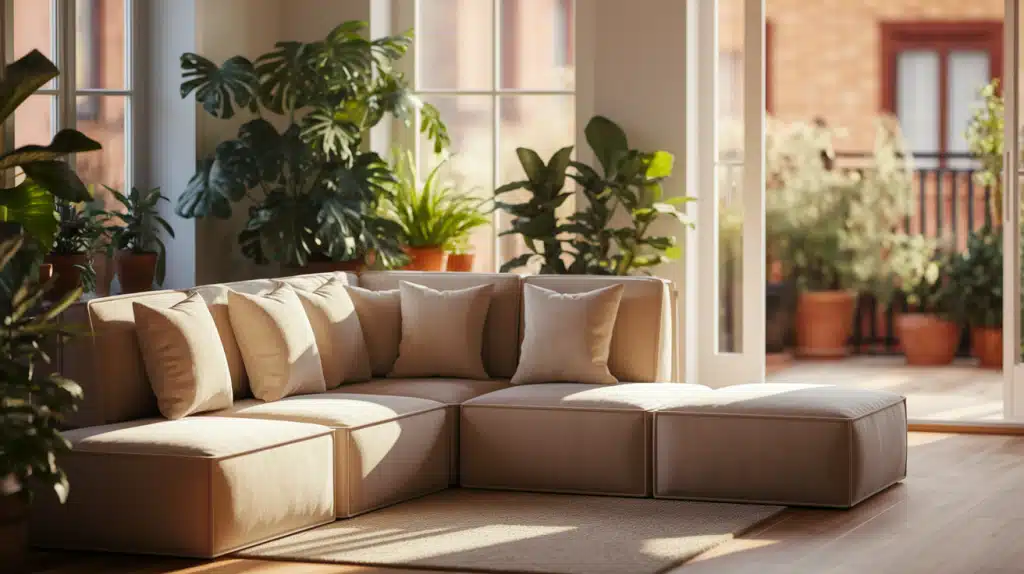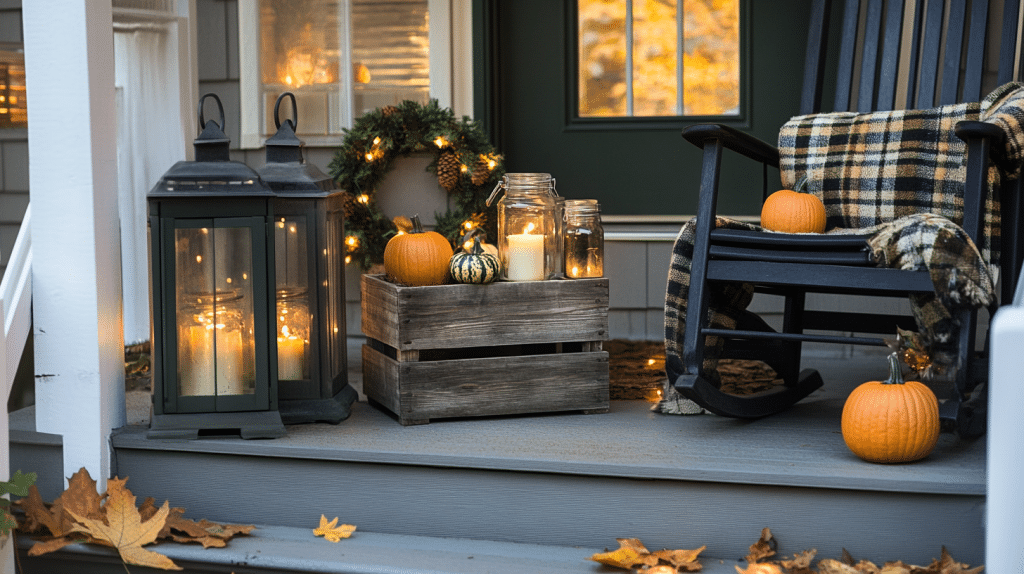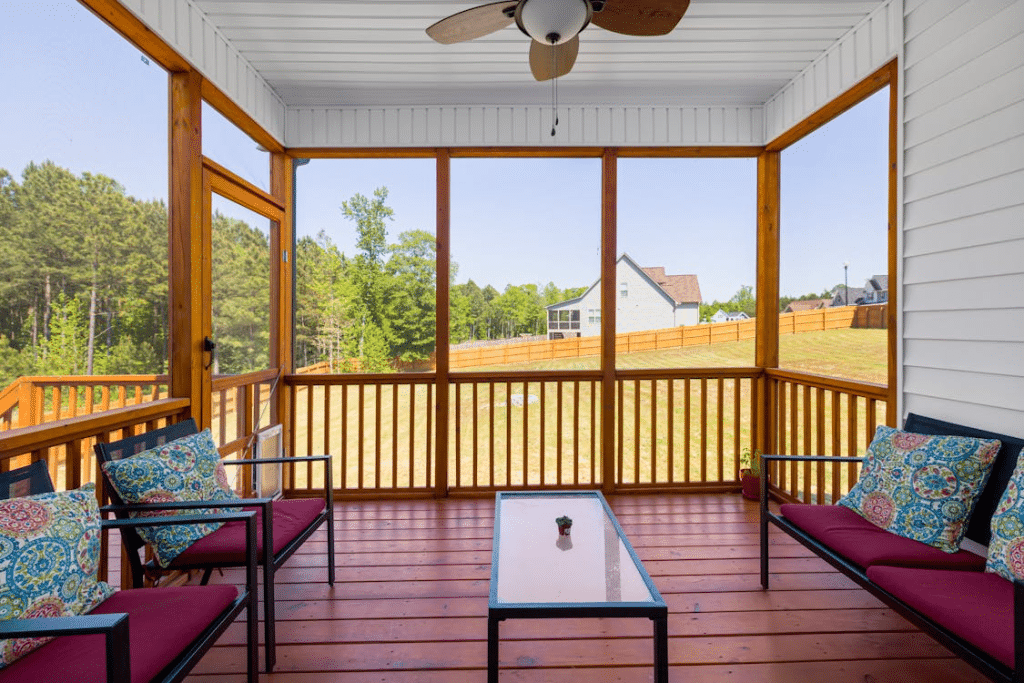Now you must be wondering what a modular couch actually is.
A modular couch is a sofa composed of separate sections that connect in various configurations.
Each piece is an independent unit designed to attach securely to other modules.
Typical pieces include armless seats, corner wedges, ottomans, chaise sections, and armrest units.
These connect through metal brackets, interlocking clips, or alignment hardware built into the frame. The specific connection system depends on the manufacturer.
You can arrange modules into L-shapes, U-shapes, or straight configurations based on your space.
To reconfigure, simply disconnect the hardware and rearrange the pieces. Individual sections can be added, removed, or replaced as needed.
Non-slip pads on the base prevent movement during use. The connectors keep sections stable and aligned while allowing disassembly when you want to change the layout.
This design provides flexible seating that adapts to different rooms and requirements, a key reason what is a modular couch has become a trending question among homeowners in 2025.
Key Features and Characteristics of Modular Couches
Modular couches have specific features that distinguish them from traditional sofas.
- Interchangeable Sections: Individual pieces connect and disconnect to create different seating arrangements. Each module works independently or as part of a larger configuration.
- Flexible Configurations: Pieces arrange into L-shapes, U-shapes, straight layouts, or custom formations to fit various room dimensions and requirements.
- Connection Hardware: Metal brackets, clips, or interlocking mechanisms secure modules together. These systems provide stability during use while allowing reconfiguration.
- Replaceable Components: Damaged or worn sections can be replaced individually without purchasing an entirely new couch, extending the furniture’s usable life.
- Easy Moving: Smaller separate pieces fit through narrow doorways and tight staircases better than one-piece sofas, simplifying relocation.
- Expandable System: Additional modules can be purchased and added to existing pieces, allowing the couch to grow with your needs and budget.
- Stable Base: Non-slip pads prevent shifting during normal use while maintaining the ability to separate pieces when needed.
Modular Couch vs Sectional Sofa: What’s the Difference?
| Feature | Modular Couch | Sectional Sofa |
|---|---|---|
| Structure | Separate independent pieces | 2-3 connected sections |
| Flexibility | Rearranges into multiple configurations | One or two fixed layouts |
| Connection | Clips or brackets that disconnect easily | Permanently attached or hard to separate |
| Moving | Easy – small individual pieces | Difficult – large, heavy sections |
| Customization | Add or remove pieces anytime | Fixed size at purchase |
| Replacement | Replace single damaged modules | Replace entire large sections |
| Stability | May shift if the connectors loosen | Very stable and secure |
| Cost | More expensive per piece | Less expensive overall |
| Best For | Frequent movers, flexible spaces | Permanent rooms, fixed layouts |
Modular couches offer maximum flexibility and easy reconfiguration. Sectional sofas provide stability and lower cost in a fixed arrangement.
Pros and Cons of Modular Sofas
Modular sofas offer unmatched flexibility, customization, and easy mobility, but they can be more expensive, require assembly, and sometimes shift apart if not securely connected.
Pros
- Flexible Arrangements: Rearrange pieces into different shapes like L-shapes, U-shapes, or straight lines whenever needed.
- Easy to Move: Smaller, lighter pieces fit through doorways and stairs easily, simplifying moves to new homes.
- Customizable Size: Add or remove sections to adjust the couch size based on your space and budget.
- Replace Individual Pieces: Damaged sections can be replaced alone instead of replacing the entire couch.
- Fits Awkward Spaces: Works well in rooms with unusual layouts or tight corners where traditional couches won’t fit.
- Adapts to Changes: Adjusts to life changes like moving, growing families, or room redesigns without buying new furniture.
Cons
- Higher Cost: Modular pieces typically cost more per seat than traditional sofas or sectionals.
- May Shift Apart: Sections can slide apart if connectors loosen or during heavy use.
- Assembly Needed: Requires time and effort to connect pieces together.
- Uneven Wear: Frequently used sections wear faster, creating mismatched appearances over time.
- Storage Required: Extra unused pieces need storage space.
- Limited Styles: Fewer design options compared to traditional couches.
How to Choose the Right Modular Couch for Your Space
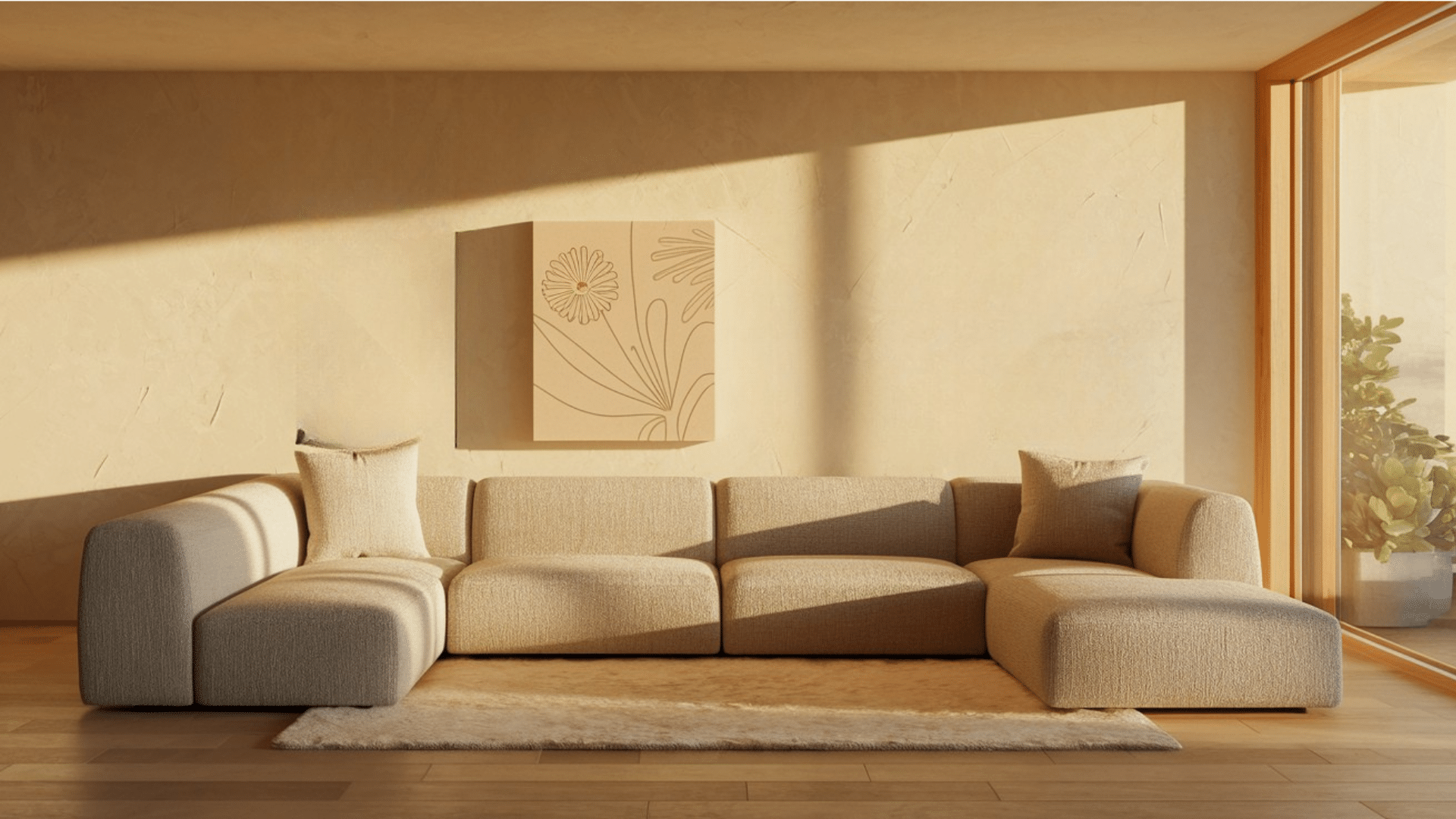
Picking the right modular couch means finding one that works for your room and your lifestyle. Here’s what to think about before you buy:
1. Measure Your Space
Grab a tape measure and check your room’s length, width, and doorways. Make sure to leave about 30 inches of walking space around the couch so people can move comfortably.
A helpful trick is using masking tape on the floor to see how different layouts would actually look in your room.
2. Pick the Right Configuration
Think about which shape makes sense for how you live:
- L-shape works great in corners or smaller rooms
- U-shape is perfect for big spaces or families who need lots of seating
- A straight layout keeps things simple and minimal
Look for couches that let you add or take away pieces as your life changes.
3. Choose Quality Materials
A sturdy frame made from solid wood or metal will last longer. High-density foam cushions stay comfortable and keep their shape better than cheaper foam.
If you have kids or pets, washable performance fabrics make cleanup easier. Leather gives you a clean look that holds up well over time.
4. Match Your Lifestyle and Style
Do you move around a lot? Pick lightweight pieces that connect and disconnect easily. Living in a small apartment? Modular couches with built-in storage give you extra space for blankets and pillows.
Neutral colors like gray or beige work with any decor, while bold colors can make your room pop.
5. Set Your Budget
Modular couches start under $1,000 for basic sets and can go over $5,000 for high-end brands. Find one that gives you good quality without breaking the bank.
Tip: The best answer to “what is a modular couch that suits me?” depends on how flexible and future-proof you want your furniture to be.
Top Modular Sofa Brands to Consider in 2025
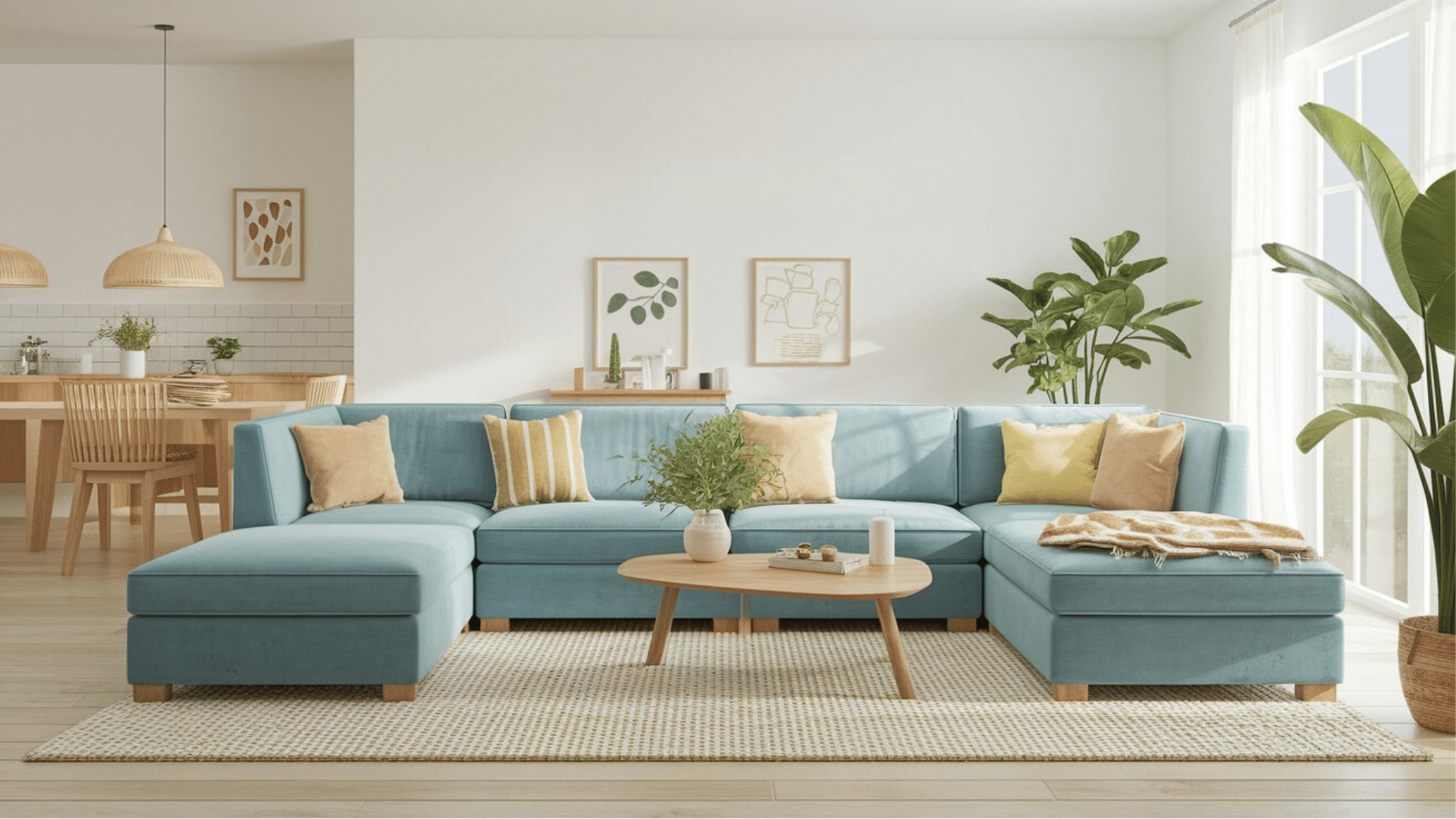
If you’re shopping for a modular couch in 2025, these brands offer the best balance of style, flexibility, and durability:
Famous for its Sactionals, Lovesac offers ultimate modular flexibility. Each piece connects securely, covers are machine-washable, and you can expand or rearrange your setup anytime.
The Kova Modular Sofa is a favorite for its plush comfort and simple setup. It’s perfect for apartments or homes that need a cozy, adaptable layout.
Known for easy-to-assemble sofas with hidden USB ports and stain-resistant fabrics, Burrow’s modular designs fit perfectly in modern spaces.
Offers sleek, customizable sofas like the Hamilton and Dawson, combining premium comfort with a modern look at an accessible price point.
Joybird stands out for its made-to-order modular sofas, allowing you to choose from dozens of fabrics and configurations, all crafted with sustainable materials.
A newer brand gaining traction for its “cloud-like” modular designs with clip systems and washable slipcovers, ideal for relaxed, flexible living.
The following brand mentions are based on publicly available information and consumer reviews as of 2025. Product features, prices, and availability may vary by retailer or region.
Care, Maintenance, and Longevity
Proper care extends your modular couch’s life and keeps it looking new.
- Regular Cleaning: Vacuum weekly with an upholstery attachment. Blot spills immediately, don’t rub. Always follow the manufacturer’s care label instructions.
- Deep Cleaning: Clean fabric couches every 3-6 months with upholstery cleaner. Use leather cleaner and conditioner on leather couches to prevent cracking.
- Rotate Cushions: Flip and rotate cushions every 1-2 months to prevent uneven wear and sagging.
- Protect from Sunlight: Keep away from direct sunlight to avoid fading and material damage. Use curtains or blinds during peak hours.
- Check Connections: Inspect and tighten brackets and clips quarterly to keep sections secure.
- Fix Damage Quickly: Repair tears or loose seams immediately. Order replacement parts from the manufacturer when needed.
- Pet Care: Trim pet nails and use washable covers on sections where pets sit.
- Storage: Store unused pieces in dry spaces with breathable covers. Stand cushions upright to maintain shape.
- Professional Cleaning: Get professional cleaning annually for deep maintenance.
Why Modular Couches are Worth it
Modular couches justify their cost through flexibility, adaptability, and long life. They grow with your home, rearrange layouts, replace single sections, or expand over time.
Unlike fixed sofas, modular designs fit perfectly in any room and move easily through doorways.
If you’re wondering if it’s worth it, the answer is yes.
It’s furniture that evolves with your lifestyle, combining smart design, durability, and comfort into one adaptable piece.


